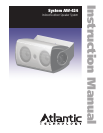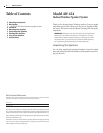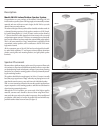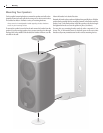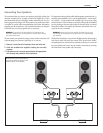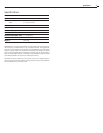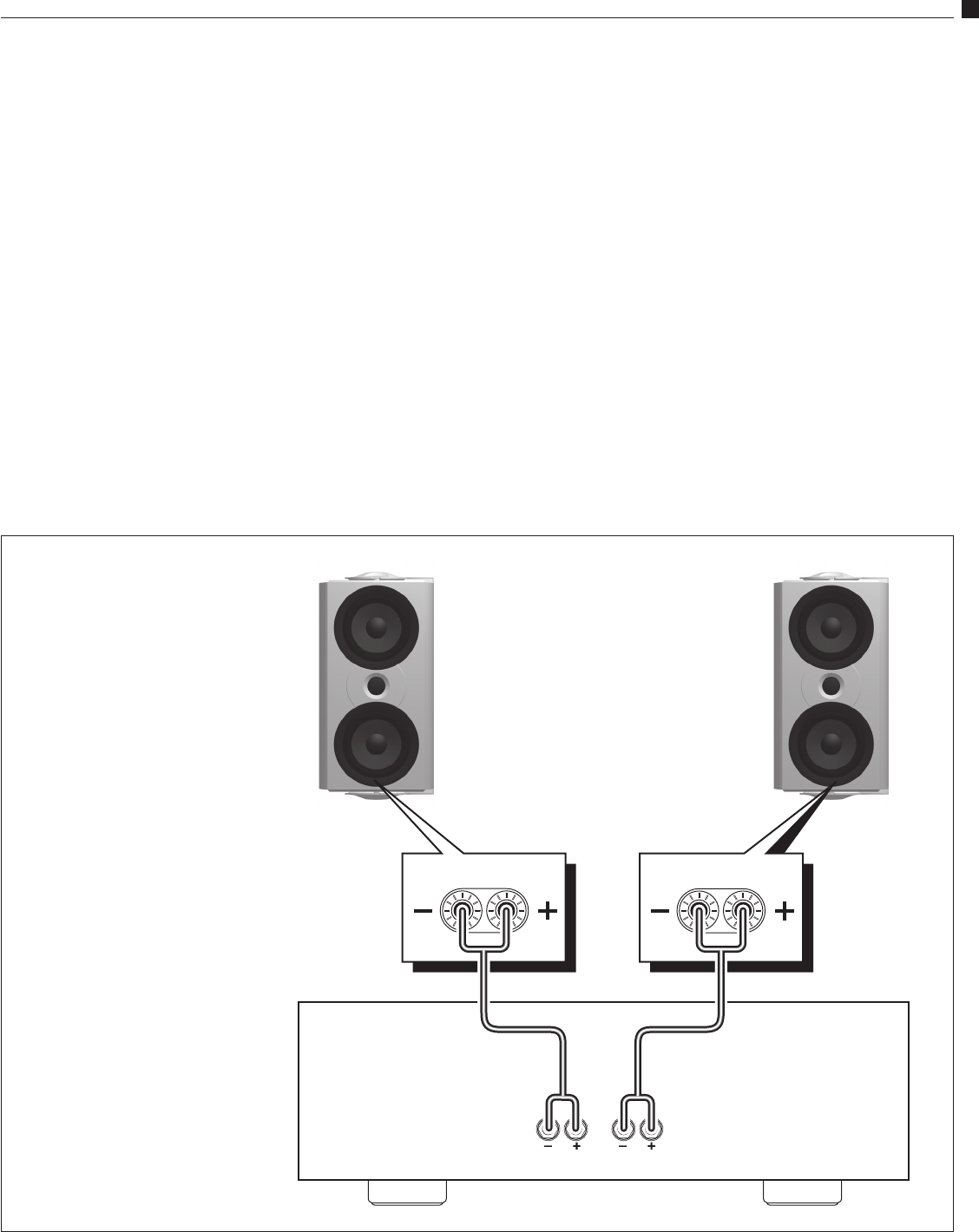
Instruction Manual
5
Connecting
Connecting Your Speakers
We recommend that you connect your speakers using high quality dual
conductor stranded wire of 16 gauge or heavier, for lengths up to 25 feet
(8m). Remember, the lower the gauge number, the heavier the wire. Use
heavier gauge wire for longer runs. Please contact your audio/video dealer
or installer for specific cable recommendations and further information
regarding special circumstances. The terminals themselves are designed
to allow the use of very heavy speaker wire or connectors.
WARNING:
To prevent risk of electrical shock or damage to your
equipment, always switch off the amplifier or receiver when making
any system connections.
You can connect your speakers by using a variety of audio connectors such
as banana plugs, pin connectors, spade lugs, etc., or you can:
1. Remove ½-inch (13mm) of insulation from each wire end.
2. Twist the stranded wire together, keeping the two ends
separate.
3. Push down on the connector post and place the appropriate
wire through the postholes in the connectors.
It’s important to observe polarity while making speaker connections: red (+)
terminals on the amplifier to red (+) on the speaker, black (–) on the ampli
-
fier to black (–) on the speaker. Look carefully at the wires you are using
and note that one of the conductors of each pair will typically be identified
by color, printing on the outer jacket, ridges on the outer jacket, or a thread
intertwined with the wire strands. By convention, the marked wire is con
-
nected to the red (+) terminal.
WARNING:
Before turning on the amplifier, be certain that no stray
wire strands are touching across any terminals as this might damage
your amplifier.
Finally, check the polarity of your front Left/Right speakers by listening to
some stereo music with good bass content. If the sound seems “hollow,”
unusually spread out, or seems to have weak bass, recheck your connections
for proper polarity and correct any out of phase connections by reversing
the connections to one speaker only, if necessary.
LEFT RIGHT
Be sure to connect red (+) on the speaker to
red (+) on the amplifier and black (–) on the
speaker to black (–) on the amplifier.



